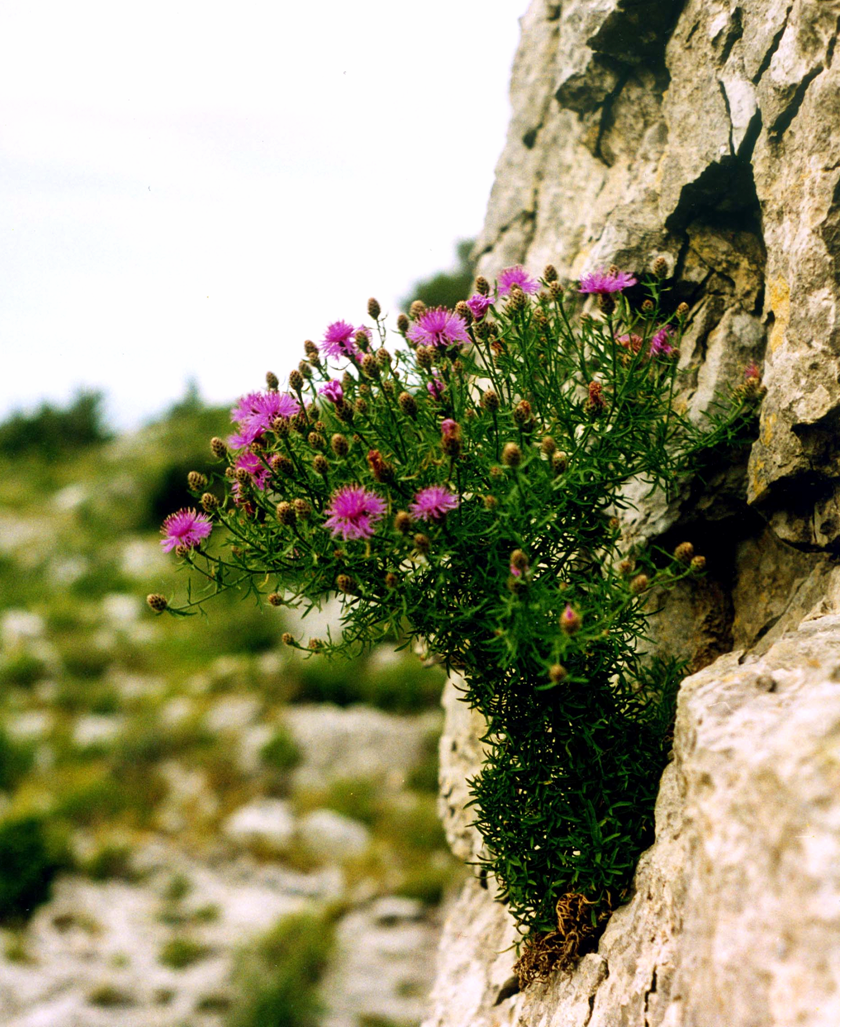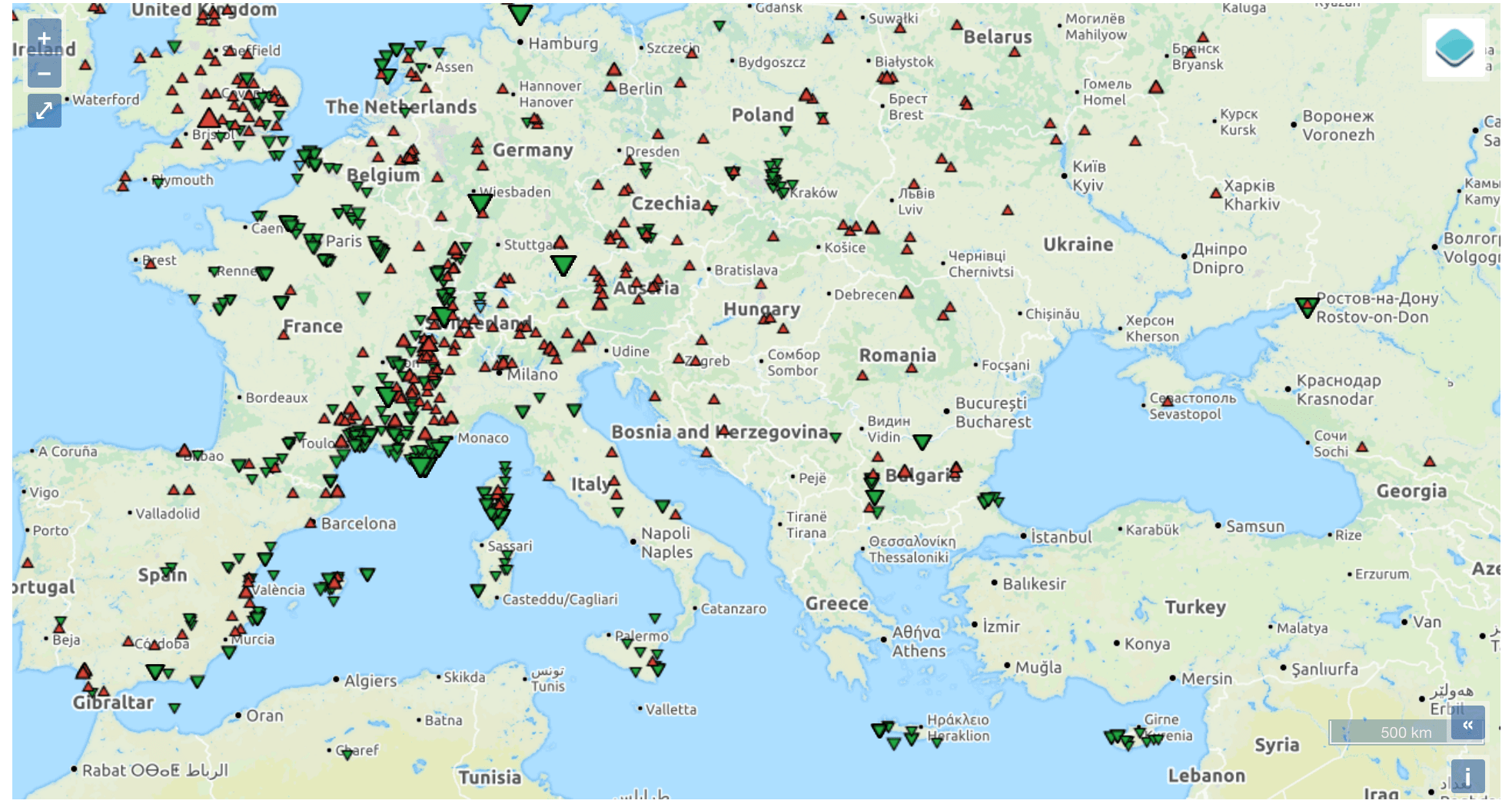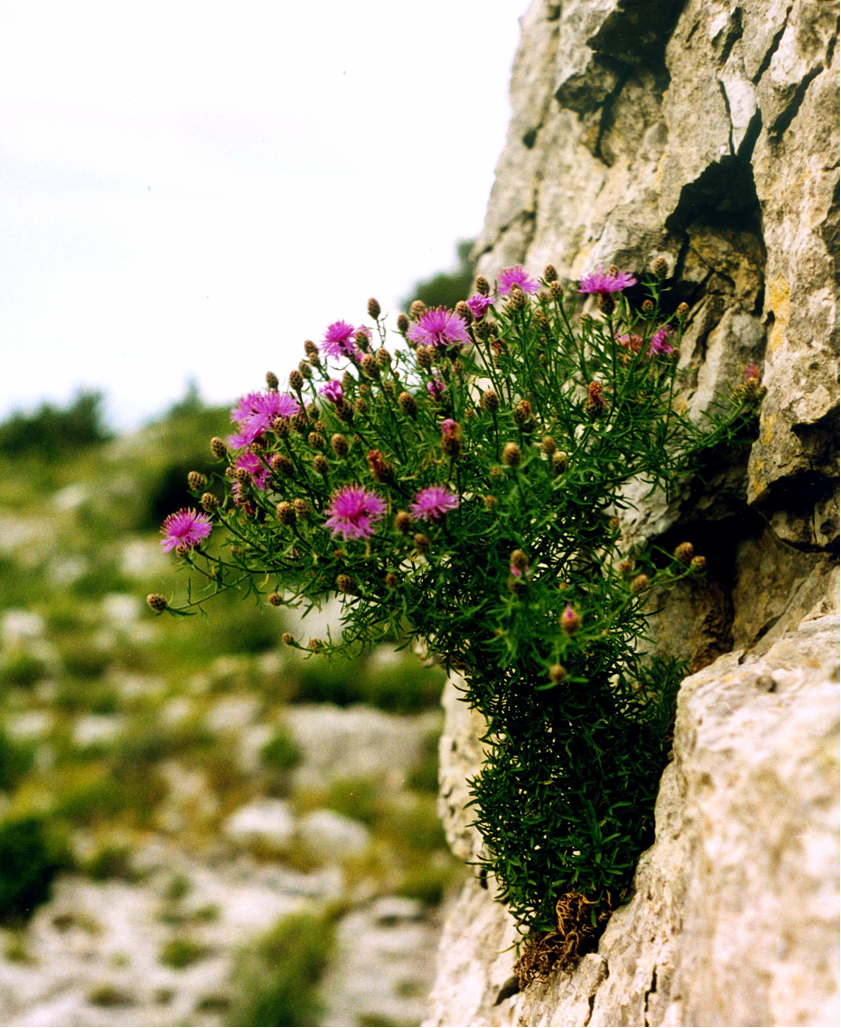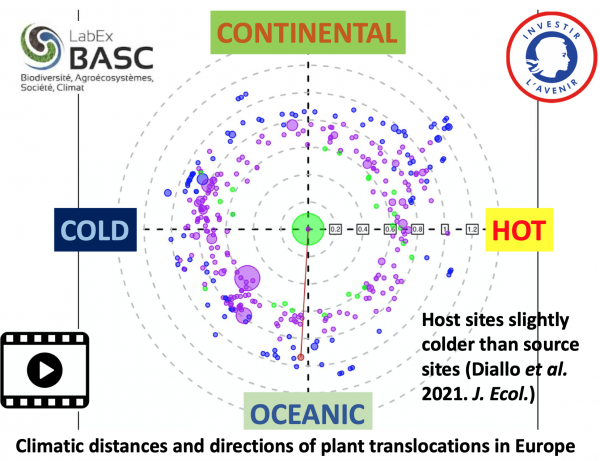Funded under the 2017 "Partnerships" call for projects, the TransLocPlant project took place over 2 years (2017-2019). Project leader: Bruno COLAS (ESE laboratory) Non-academic partners: Conservatoires botanique national (CBN) des Pyrénées et de Midi-Pyrénées ; CBN Bassin Parisien ; CBN méditerranéen de Porquerolles ; Conseil National de la Protection de la Nature (CNPN) ; Agence Française pour la Biodiversité (AFB). Full project title: TransLocPlant - Translocation of plant species: towards the development of a web platform for managers and researchers
Bruno Colas, one of the co-founders of the database, answers our questions:
Why are plant species translocations becoming more frequent?
Anthropogenic pressures on natural habitats lead to a strong fragmentation of environments where plant species live whose ability to disperse is limited. Many of them therefore live in isolated populations and cannot colonize potentially favorable sites. In the absence of an effective green network for many plant species, translocations are increasingly used to reinforce existing populations, reintroduce or create new populations[1].
What is a translocation?
Translocation is the intentional movement of living organisms from one site to another by humans[2]. Translocations are generally carried out in order to conserve endangered species, to restore degraded ecosystems or to protect nature in the context of a development project, in application of legal provisions (e.g. the Avoid-Reduce-Compensate sequence in France).
Why are the current conditions under which translocations are carried out unsatisfactory?
The relevance and efficiency of translocations depend on many factors related to the biology of the species, the sites where they are received and the methods of translocation. However, the actors of translocations (institutions, associations, public works companies...) have little feedback from past experiences[3], which hinders the evaluation of the relevance of these operations and, when they are carried out (often in emergency), their chance of success[4].
Map of the 1239 populations relocated listed by the end of 2019. Each triangle represents the destination location of a population.
.
How do we delineate a population in biology?
In biology, a population is a group of organisms of the same species living in a certain geographical area at the same time, with the capacity to reproduce. Concretely, based on knowledge of the biology of the species, the structure of the landscape and the distance separating groups, if we estimate that gene flow due to the dispersal of individuals, diaspores (e.g. grains, fruits) or gametes (e.g. via pollen) between these groups occurs only a few times per generation, we consider these populations as distinct.
Why are data on translocations difficult to access?
They are part of the very scattered grey (i.e. unpublished) literature and are rarely the subject of scientific publications, especially for plants.
To remedy this, you have set up a database?
The project aimed to set up a long-term collaboration between researchers and non-academic actors of translocations (French Agency for Biodiversity, National Council for the Protection of Nature, Botanical Conservatories, Regional Directorates for the Environment, Development and Housing, research departments, etc.), with exchanges of information on past translocations, to better judge the relevance of translocation projects and improve their protocol (i.e. the rules under which they are conducted).
Centaurea corymbosa in flower (© Bruno Colas). Foot of Centaurea corymbosaen flower, an endangered species of which two populations were created in 1994 on the Massif de la Clape, near Narbonne[5]
Does the database shed light on the controversial debate about a type of translocation carried out in the context of climate change adaptation: I am talking about initiatives to move populations to less hot and dry areas, closer to their natural habitat?
The database allows us to study the geographical and climatic distances and directions between the sites of origin of the biological material and the host sites. This ongoing study[6] will allow us to understand how future climate is taken into account by managers when they carry out a translocation, and the weight of climate change in relation to other considerations (land ownership, distance, economic or administrative constraints, etc.) when a host site is selected.
What was the main criterion for inclusion in the database?
The database only records translocations with a viability objective: to reinforce an existing population, to reintroduce an extinct population or to introduce (for the first time) a population in a site. This is justified for comparability purposes. This does not prevent them from pursuing other objectives as well: experimentation, promoting services rendered by nature (ecosystem services), etc.
What has been the degree of appropriation of the database by researchers and non-academic actors? Can we speak of a snowball effect?
The database (TransLoc) currently lists 1239 populations of embryophytes (mosses, ferns, seed plants), lichens and animals, translocated in Europe (in the geographical sense) and in the Mediterranean area. The idea is very well received by the non-academic actors met in France, who have started to participate in the project. Concerning researchers, we have started a collaboration with a team from Montpellier and a Spanish team and we are in contact with an English team.
What are the next steps?
We hope to be able to strengthen the collaborations already established and to create new ones, especially with foreign non-academic actors. But the deployment of the database and the extension of its attractiveness and notoriety will strongly depend on our capacity to ensure its long-term IT management, which is currently not the case.
Scientific publications (in preparation)
Presentations
>Colas B. and Fernandez-Manjarres J. 2015. An analysis of plant conservation translocation in Europe. Oral presentation at the International Congress for Conservation Biology and European Congress for Conservation BiologyConference, Montpellier, France.
>Colas B. 2018. Translocations of plant species in France. Working meeting Agence française pour la biodiversité-Conservatoires botaniques around the BASC-Partenariats TransLocPlant project. 11 April 2018, Paris, France.
>Colas B., Ferjani S., Mayeur A., Diallo M., Mihoub J.-B., Morin A., Robert A., Thévenin C., and Sarrazin F. 2019. TransLoc: An online database of translocations in the Western Palearctic. Oral presentation. Seminar "Deploying joint projects around the flora of the Loire. December 10, 2019, Tours, France.
> Planta Europa, May 2020 in Paris
> Scientific days of LabEx BASC, February 4, 2021:
The researcher explains his RESULTS in VIDEO
→Link to the database
__________________________________________
[1]revues dans Beck et al. 1994, Bottin et al. 2007, Menges 2008, Godefroid et al. 2010, Dalrymple et al. 2011
[2]IUCN & SSC 2013
[3] Muller 2016
[4]Fahslet 2007
[5]Colas, B., Kirchner, F., Riba, M., Olivieri, I., Mignot, A., Imbert, E., … Fréville, H. (2008). Restoration demography: A 10-year demographic comparison between introduced and natural populations of endemic Centaurea corymbosa(Asteraceae). Journal of Applied Ecology, 45(5), 1468–1476. https://doi.org/10.1111/j.1365-2664.2008.01536.x
[6]Thesis of Mohamed Diallo





